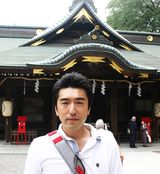In the context of cognitive processes, let's explore the difference between "理解" (Understanding) and "認知&am
- 2024/01/10 23:45

In the context of cognitive processes,
let's explore the difference between
"理解" (Understanding) and "認知" (Recognition).
Lately, I've been thinking about the tendency to oversimplify the essence of things, which involves a difference between "理解" (understanding) and "認知" (recognition). Often, what many consider "understanding" actually ends up being mere "recognition." "理解" literally means "to comprehend the reason," and it's used when one truly understands the essential mechanisms. On the other hand, "認知" means "to acknowledge its existence" and is used when something is recognized on a surface level. Even in such ways of perceiving things, the meaning differs significantly.
I had a similar experience during a conversation with the secretary of the NPO Bushido Association. When people hear "Bushido," they often immediately associate it with the image of "fighting." However, when you ask about the essence of "Bushido," the answer is "武" (bu), which originally means "to stop" the weapon "戈" (hoko). In other words, it's about controlling the opponent without drawing the sword, revealing the mindset of moral thinking. It's surprising for many, as it goes beyond the expected association of combat.
Similarly, when asking about "Shinto," people often simplify it as a "religion." While Shinto does have the legal status of a religious organization, the word "religion" doesn't capture its essence accurately. "Religion" translates to "尊い教え" (precious teachings), but Shinto lacks specific scriptures or teachings. So, it doesn't quite fit the definition. Shinto, despite being legally categorized as a religious organization, doesn't conform entirely to the conventional understanding of "religion." These examples show that the essence of things can be unexpectedly profound. It's a matter of whether our consciousness reaches that depth. Have you truly understood these concepts, or have you merely recognized them?


(Shrine Person Operator, Representative of Culture J, Ltd., Hidetoshi Tojo)
Hidetoshi Tojo was born in 1972 in Saitama Prefecture and is the representative director of Culture J, Ltd. He is the direct descendant of Hideki Tojo and the 18th head of the family. Exploring a unique social welfare model in Japan, he turned his attention to the presence of shrines and Shinto. Advocating for cultural tourism through shrines, he aims to revitalize new local communities and cultural entertainment.
1: "What is True Culture? Understanding Japan"
2: Real Meaning of Foundation Day of Japan as a Nation
3: There is a great leap forward after overcoming a crisis.
4: Let's return to the spirit of "Mottainai"!
5: "Understanding Japan's Obon Festival"
6: "The Pink Book for Fulfilling the Whims of Adult Women"
7: "The cultural roots of Japanese New Year
8:Rekindling the Spirit of Herbivore Men Through Taiko Drumming?
9: "Publishing 'Proof of Japanese Identity' - Column by Hidetoshi Tojo, No. 10"
10: "Publishing 'Proof of the Japanese' - Part 2 - Hidetoshi Tojo's Serial Column No. 11"
11: "For the Japanese, What Does 'Work' Mean? - Hidetoshi Tojo's Serial Column No. 12"
12: Learn from the keen insights of our predecessors – Hidetoshi Tojo's Column No.13
13: Japanese Language Quirks: Logographic and Phonetic Characters
14: "What Does 'Shikinen Sengu' Mean to the Japanese? - Hidetoshi Tōjō's Column No. 15"
15: Cultivation Required in a Global Society? - Column by Hidetoshi Tojo, No.16"
16: "Publication of 'Shrine Tourism'!! Hidetoshi Tojo's Serial Column No. 17"